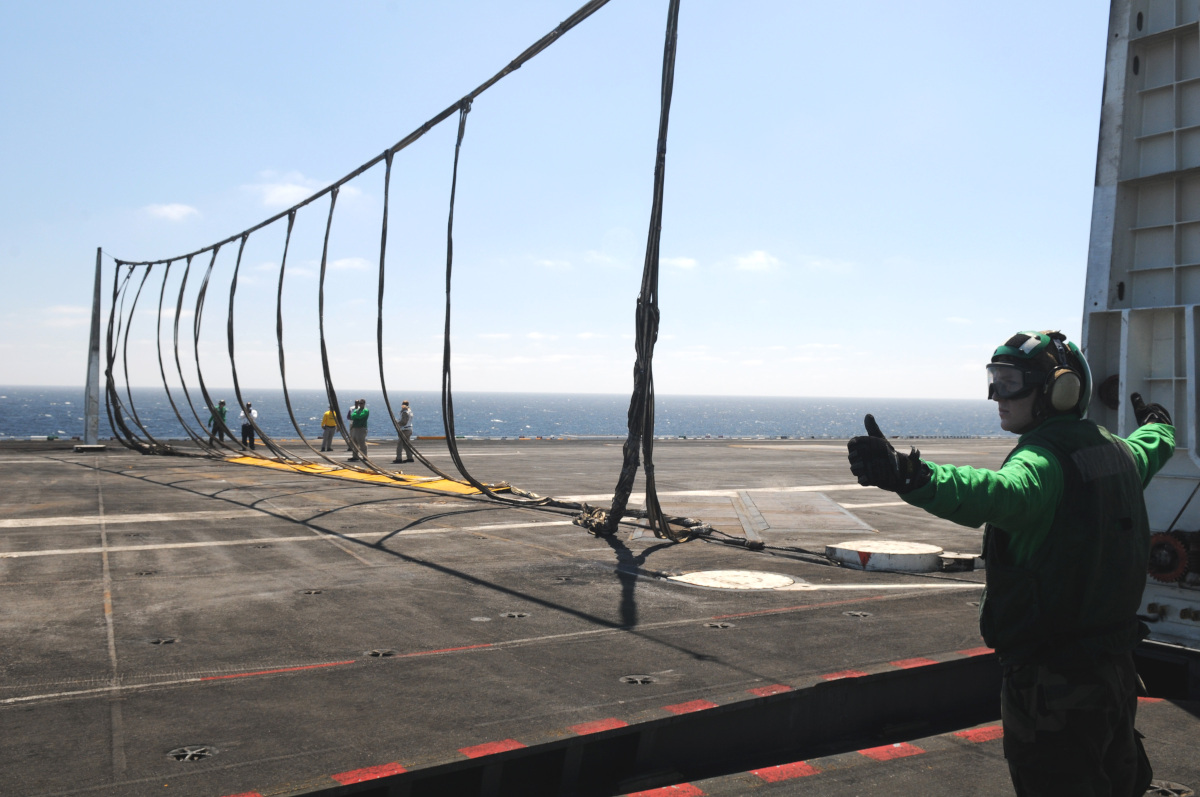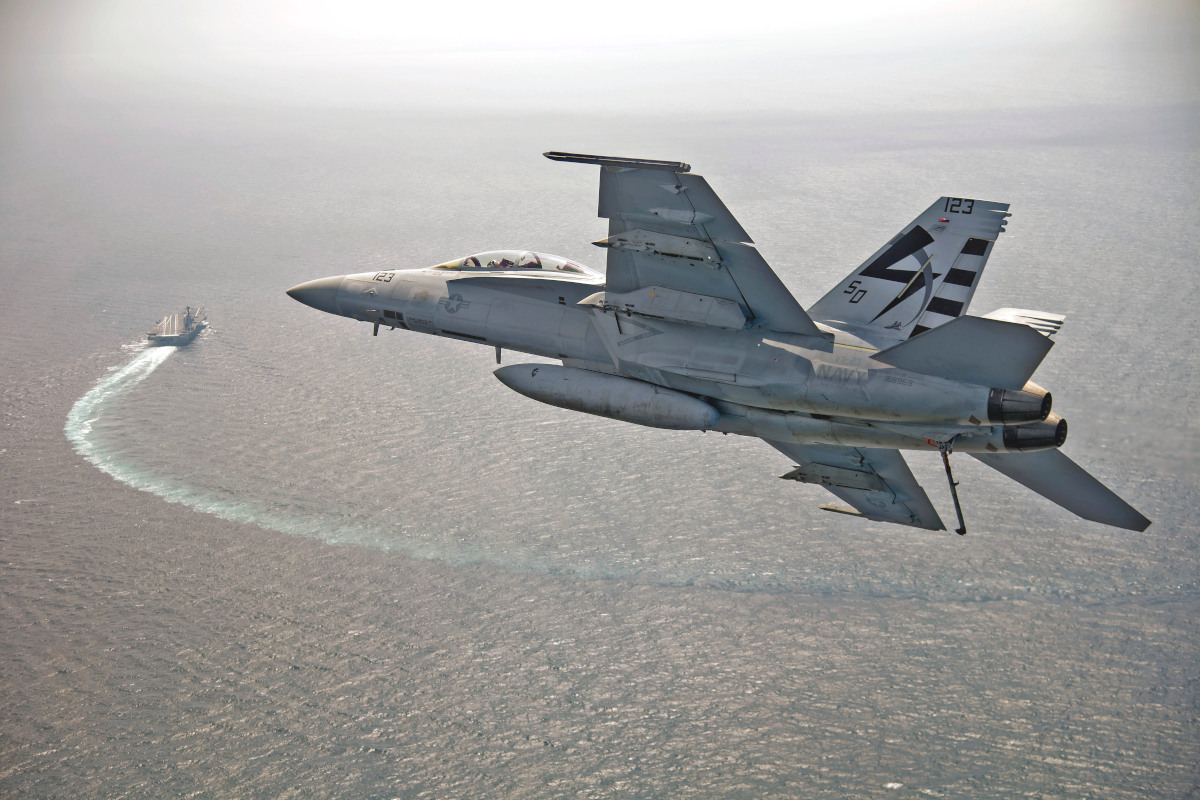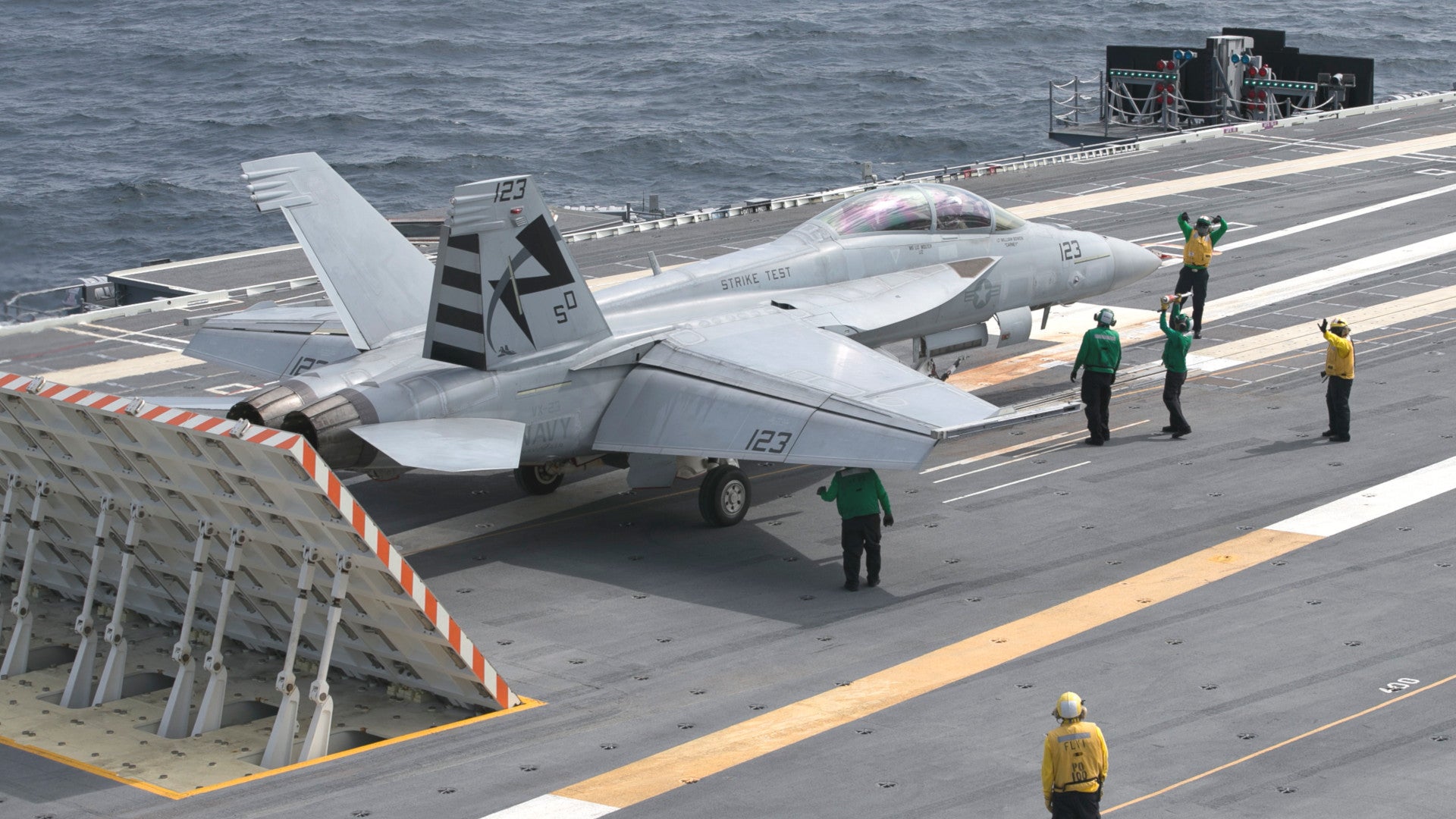The U.S. Navy has revealed that personnel aboard the first-in-class USS Gerald R. Ford carriers do not even have the necessary technical information to reliably launch and recover all configurations of the F/A-18E/F Super Hornet fighter jet and EA-18G Growler electronic warfare aircraft. This follows a new Pentagon report that says the flattop’s advanced electromagnetic catapults and improved arresting gear remain as problematic as ever.
On Feb. 14, 2019, USNI News was first to report on the lack of information, which only further speaks to Ford’s, at best, limited capabilities to perform its core mission of conducting naval aviation operations nearly two years after delivery. In January 2019, the Director of Operational Test and Evaluation, or DOT&E, released its latest annual review of the carrier’s progress, covering developments during the 2018 Fiscal Year. The report was highly critical of the state of Electromagnetic Aircraft Launch System (EMALS) and the Advanced Arresting Gear (AAG).
“In a couple of months, they are on a path to publish the fully fleet-representative recovery bulletins that will give us the capability to recover any weapons configuration which F-18 or a Growler can have on a Nimitz-class,” U.S. Navy Commander Mehdi Akacem, Ford’s Air Boss, told reporters visiting the carrier earlier in February 2019, according to USNI News. “So, when we next get to sea, we’re going to have tests pilots come out to do one real validation on the actual aircraft carrier, but then once that’s complete then we will be able to have fleet aircraft to come out and operate with us.”
The Navy needs to develop these so-called launch and recovery bulletins in order to be able to properly set the parameters on the EMALS and AAG. These systems are highly automated so that the carrier’s crew can fine tune the launch and recovery process better than they could with the steam-powered catapults and arresting gear on the Nimitz-class carriers.

At least on paper, the idea is that, with sufficient data, these systems can be set to very precise parameters that are specific to a certain type of aircraft and its loadout. There are many benefits to doing this, including reducing the wear and tear on both the carrier and its aircraft. In principle, the catapults will only need to use just enough force to throw a plane into the air and the arresting gear will only put the minimum amount of strain on the airframe to bring it safely to a stop.
For example, the EMALS settings would be for an F/A-18E/F carrying a purely air-to-air loadout won’t be the same as one loaded down with 10 1,000-pound class precision-guided bombs. Differences in total fuel load, the exact configuration of the particular airframe, and other factors might come into play, as well. This would all apply to the AAG recovering returning aircraft, which might have partial stores and fuel loads.
Concerns about how much stress the EMALS, in particular, puts on heavily laden aircraft has long been an issue. In 2017, the Navy had announced it had finally developed a software fix to prevent the catapults from over-stressing F/A-18E/F Super Hornets and EA-18G Growlers specifically when carrying the 480-gallon centerline drop tank.
“[But] there is no urgency to apply the fix, as shipboard launches of F/A-18s with [external fuel tanks] will not be conducted until 2019, following CVN-78’s Post Shakedown Availability,” Rob Koon, a spokesperson for Naval Air Systems Command, told USNI News at the time. “There will be no impact because the aircraft launched prior to that time will not have [external fuel tanks]. [Post-shakedown availability] is the next availability for incorporating the software updates aboard CVN-78 without disrupting its upcoming test schedule.”

The problem is that until the Navy has sufficient data points, and has conducted flight tests to confirm their validity, Ford will still be limited in not only what kinds of aircraft it can send up, but what they can carry at all. Commander Akacem told the assembled reporters that the goal was to have all of the necessary information about the F/A-18E/F and EA-18G by the end of 2019.
Unfortunately, neither the EMALS nor the AAG have come close to meeting the Navy’s basic requirements after years of development. Akacem and the rest of Ford’s crew will have to contend with the extremely poor reliability of both systems as they try to confirm the launch and recovery data.
As of September 2018, Ford had conducted a total of 747 launches using EMALS, with the system suffering 10 critical failure over the course of those tests, according to DOT&E’s latest report. The Navy’s requirement is for the catapults to be able to launch an average of 4,166 aircraft before experiencing a serious fault.
The AAG’s performance was even worse. In 763 attempted recoveries, the arresting gear also suffered 10 operational mission failures. This included one instance in which the backup barricade system, primarily meant to stop an aircraft experiencing some sort of inflight emergency, also failed.

DOT&E noted that this rate was not only exponentially lower than the Navy’s established requirement of one failure every 16,500 recovery attempts, but also didn’t meet the requirements laid out in a new “re-baselined reliability growth curve.” What this means is that the service has outlined a new, delayed schedule for when the AAG should be making progress and the system isn’t even meeting those demands.
In its report covering the 2017 Fiscal Year, DOT&E said that problems with the AAG meant Ford had just a one percent chance of being able to get through a typical day of flight operations without a problem. For testing purposes, the Navy had defined a normal day as recovering 84 aircraft during a 24-hour period.
To make matters worse, crews still have to power down the entire EMALS or AAG system in order to troubleshoot problems, instead of being able to just cut off electricity to specific components. This effectively brings flight operations to a halt while trying to assess and fix the fault. It takes an hour and a half just to spin down the EMALS generators and motors before any repair work can begin.

These problems also raise the question about how representative the data the Navy is collecting will be in the long term if there becomes a need for significant changes to the EMALS or AAG in the future. Major modifications to either system could require the service to have to re-validate the settings all over again.
With two more Ford-class carriers already under construction, and the Navy having just agreed to purchase another pair after that, one can only hope that the service will be able to certify that all of the carrier air wing’s aircraft will be able to fly from their decks at all as soon as possible. But the ongoing difficulties with the EMALS and AAG present a definite risk of more delays,.
If nothing else, this only underscores the extremely limited operational capability Ford has at present and further calls into question when it might be able to make any sort of meaningful contribution to real-world missions.
Contact the author: jtrevithickpr@gmail.com
